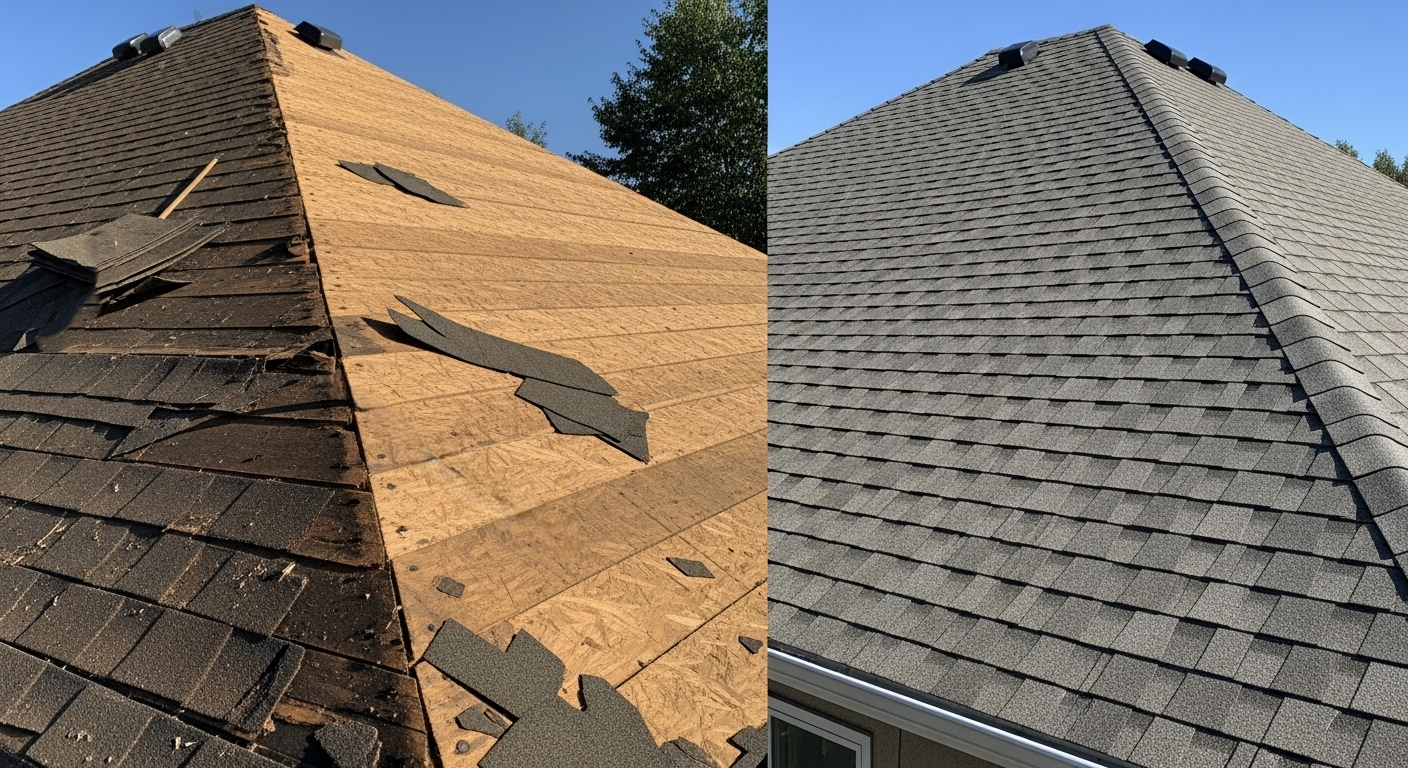
At American Quality Remodeling, we often meet homeowners who are surprised to learn there`s more than one way to replace a roof. Many people assume a full tear-off is the only option, but that`s not always true. Sometimes, the best solution is what professionals call a roof overlay – a process where a new layer of shingles is installed directly over the existing roof.
It sounds simple, right? And in many ways, it is. But before deciding whether a roof overlay is right for your home, it`s important to understand how it works, when it`s recommended, and what trade-offs come with choosing this method.
Our team has been serving New Jersey homeowners for over 25 years, and we`ve seen every roofing scenario imaginable – from minor repairs to complete rebuilds. So, let`s dive in and answer the question: what exactly is a roof overlay, and is it worth it?
Understanding Roof Overlay vs Complete Roof Replacement
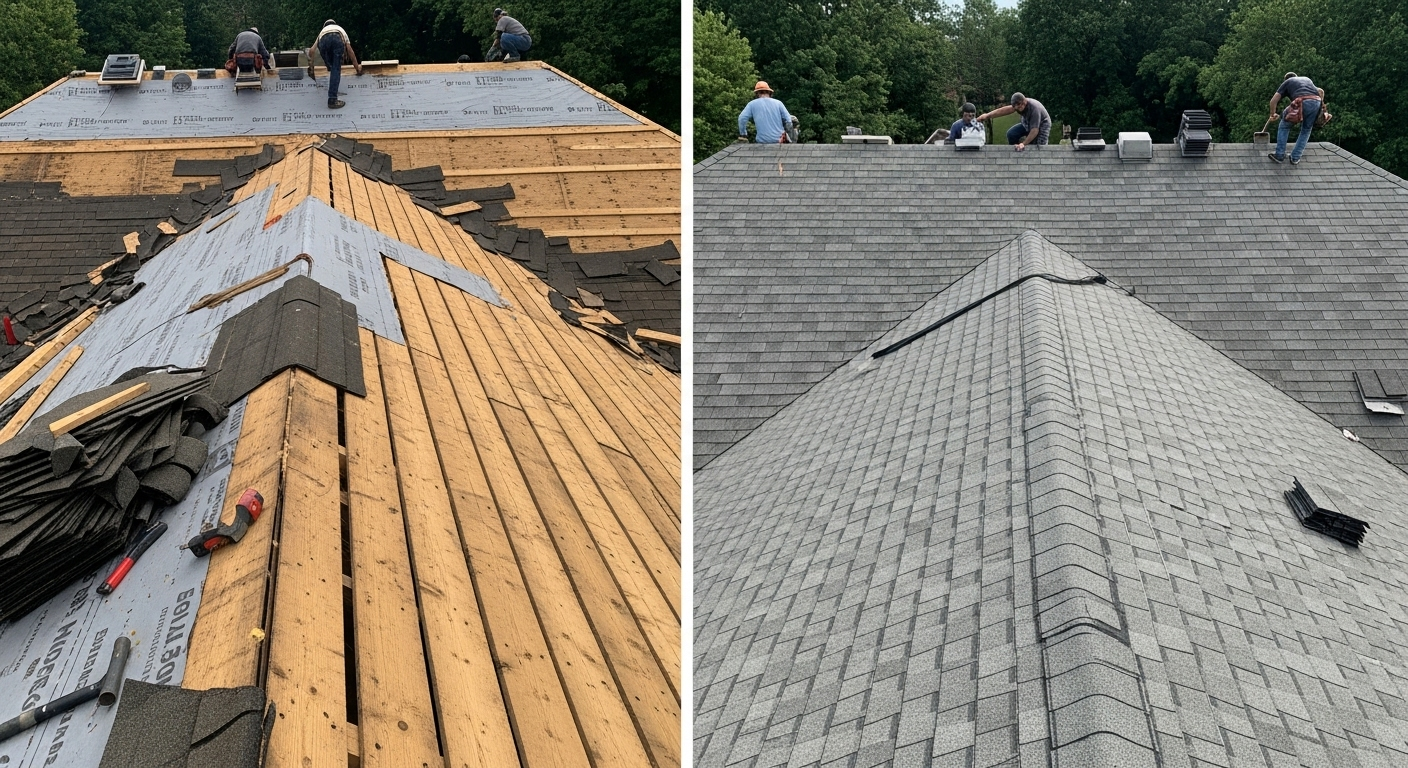
A roof overlay is often described as a “shortcut” to a new roof – but that`s not quite fair. Done properly, it`s a legitimate, cost-effective technique for extending your roof`s life without removing the old shingles.
During a full roof replacement, contractors strip off every existing layer down to the decking. Then, they install new underlayment, flashing, and shingles. With a roof overlay, the old shingles stay in place, and the new ones go directly on top. It saves time, labor, and disposal costs.
But this approach isn`t right for every roof. If your current shingles are curled, cracked, or water-damaged, installing new ones on top can trap moisture and shorten the life of the new layer. That`s why professional inspection is key. At American Quality Remodeling, we never recommend an overlay unless the existing structure is sound and free of leaks.
Understanding these differences helps homeowners make informed decisions – and that`s always the foundation of a strong project.
How a Roof Overlay Actually Works
Here`s how it plays out on a typical home in New Jersey. First, our team performs a detailed inspection to make sure the existing roof deck is solid and dry. Then we clean the surface, repair any minor damage, and prep it for the new shingles.
Next comes the installation. We layer the new shingles directly over the old ones, aligning the courses carefully to maintain a proper seal and uniform appearance. Flashings and vents are replaced as needed, and we check that the added layer doesn`t interfere with ridge lines or gutters.
When done right, an overlay roof covering can give your home a refreshed look and extra weather protection without the hassle of a full tear-off.
The Layer-Over-Layer Concept Explained
The concept behind a roof overlay is simple: instead of removing what`s already there, you build on top of it. Think of it as giving your roof a second skin.
This approach works best when the base layer is still structurally sound. It`s not about covering problems – it`s about adding new protection on a foundation that`s still strong.
In most states, including New Jersey, you can have up to two layers of shingles on a roof according to building codes. Any more than that can add too much weight and put stress on the structure.
That`s why we always start with precise measurements and weight calculations before recommending an overlay. The goal isn`t to cut corners. It`s to make sure your new roof performs safely and lasts as long as possible.
When Contractors Recommend This Method
Not every roof qualifies for an overlay, but there are situations where it makes perfect sense.
We often recommend this method for homeowners who need a quick upgrade before selling their house, or for properties with minor wear where the existing shingles are still in good condition. It`s also ideal when you`re working within a tighter budget but want a clean, new appearance without extensive structural work.
The weather also plays a role. A roof overlay can be completed faster than a full replacement, which makes it appealing during New Jersey`s unpredictable spring and fall seasons.
At American Quality Remodeling, our rule of thumb is simple: if the roof deck is solid, the shingles are flat, and there`s no trapped moisture, an overlay can be a smart choice that delivers real value.
The Pros and Cons of Overlay Roof Covering
Like any home improvement decision, choosing an overlay comes with pros and cons. It`s not a one-size-fits-all solution. Let`s go over both sides so you can decide whether it`s the right move for your home.
Cost Savings and Project Timeline Benefits
One of the biggest advantages of an overlay roof covering is cost. Since there`s no tear-off, you save on labor, dump fees, and project time. That can reduce your overall bill by 20-30%.
Homeowners in New Jersey typically pay less for overlays because fewer crew hours are needed, and the job can often be finished in just one to two days. That`s a big win if you want minimal disruption and quick results.
These savings don`t mean you`re sacrificing quality. A properly installed overlay still provides solid protection against wind, rain, and sun exposure – especially when done by certified professionals who understand how to balance old and new layers effectively.
Less Disruption to Your Daily Life
Roofing work can be noisy and stressful, especially during a full tear-off. An overlay reduces that chaos.
Without removing the old shingles, there`s no heavy debris, fewer nails falling around your yard, and less dust. The process is quieter, cleaner, and faster – perfect for families or anyone working from home.
We`ve had customers tell us they barely noticed the installation until it was done. That`s the kind of seamless experience American Quality Remodeling aims for.
Potential Drawbacks You Should Know About
Of course, an overlay isn`t without its downsides. The biggest concern is that you`re not addressing any hidden damage underneath. If the roof deck has rot, mold, or trapped moisture, it`ll stay there – and could eventually lead to bigger issues.
A second layer also traps more heat. That can shorten the lifespan of your shingles over time, especially on roofs that get full sun exposure. It`s one reason we use high-quality ventilation systems and reflective materials whenever possible.
Another consideration is future maintenance. Once you install an overlay, you can`t add a third layer later. The next replacement will require a full tear-off of both layers, which can increase future labor costs.
That`s why transparency is so important. We always tell homeowners both the short-term and long-term implications before starting an overlay project.
Weight and Structural Considerations
Every roof has a weight limit. When you add another layer of shingles, you`re increasing the load on the framing, rafters, and decking.
For most homes in New Jersey, this isn`t a problem – as long as the original roof is in good shape and properly built. But older homes or structures with existing damage may need a full tear-off instead of an overlay.
Our team calculates the weight of the additional materials and verifies the integrity of your roof structure before making any recommendations. It`s not guesswork; it`s engineering.
When installed safely, an overlay can give you that brand-new look without compromising the structure. But that initial assessment makes all the difference.
How Long Does a Roof Overlay Last
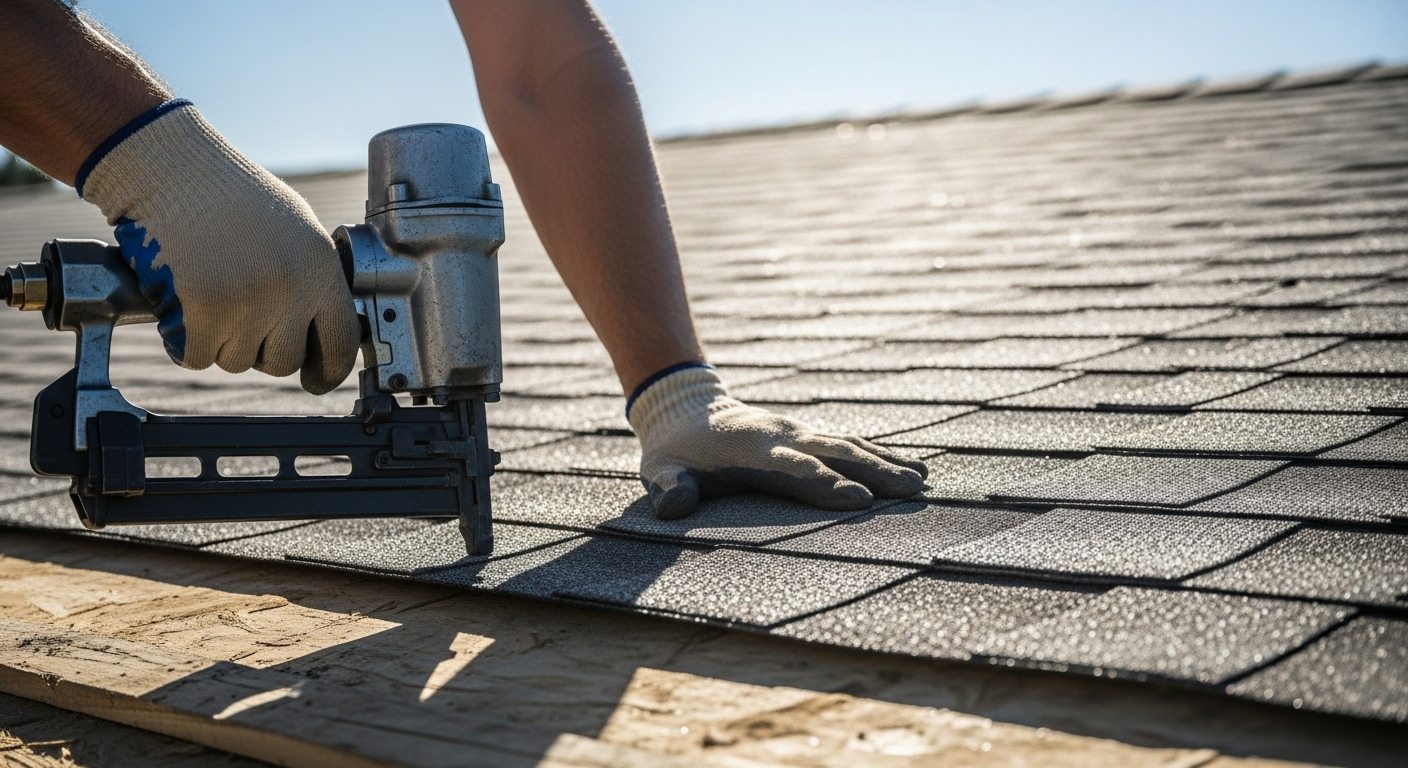
One of the first questions homeowners ask us at American Quality Remodeling is, “how long does a roof overlay last?” It`s a great question because durability is what makes roofing such a serious investment.
On average, a properly installed roof overlay lasts 12 to 20 years, depending on material type, climate, and maintenance. That`s slightly less than a full replacement, which can last 20 to 30 years or more. The reason? The old shingles underneath affect ventilation and heat retention, which can age the new layer faster.
Still, when the base structure is solid and the materials are high quality, overlays can deliver impressive longevity. Many of our New Jersey clients have enjoyed 15+ years of leak-free protection before considering another replacement.
Expected Lifespan Compared to Full Replacement
Think of it this way – a full replacement gives you a clean slate, while a roof overlay extends the lifespan of your existing structure.
If your home`s roof deck is strong, and your first layer of shingles remains stable, an overlay can perform nearly as well as a brand-new roof. But if the old layer already has hidden issues or uneven areas, the new shingles may not seal as tightly.
We always inspect the attic, decking, and ventilation before recommending an overlay. The goal isn`t to take shortcuts. It`s to deliver the most value and longevity your roof can offer, given its condition.
Factors That Affect Durability
Several things influence how long your overlay lasts. Material quality comes first. Premium architectural shingles can easily outlast lower-end products by five to ten years.
Proper ventilation also matters. Without it, trapped heat accelerates shingle wear and can lead to moisture buildup. Our team at American Quality Remodeling makes sure every overlay installation includes balanced attic airflow to prevent that.
Lastly, installation quality plays a huge role. An overlay must be perfectly aligned with the underlying layer. If it`s uneven, water can find its way beneath the shingles and cause premature damage. That`s why craftsmanship is everything in roofing – and why hiring experienced professionals makes all the difference.
Weather Impact in the Tri-State Area
New Jersey weather isn`t gentle on roofs. Between humid summers, icy winters, and sudden coastal storms, your roofing system faces year-round stress.
These conditions can shorten the lifespan of an overlay if the materials or understructure aren`t prepared for them. Asphalt shingles expand and contract with temperature shifts, and overlays tend to absorb more heat than single-layer roofs. Over time, that can lead to cracking or curling.
That`s why we use roofing materials rated for high wind resistance and heat reflection. They`re built to handle our local climate – and that helps every overlay last as long as possible.
Warranty Considerations and Coverage
One thing many homeowners overlook: warranty coverage. Most roofing manufacturers offer full warranties only for complete tear-offs, not overlays. However, that doesn`t mean you`re left unprotected.
At American Quality Remodeling, we provide workmanship guarantees for every overlay project we complete. While manufacturer coverage may be limited, our in-house warranty ensures your investment is still secure.
We`re upfront about these details during your consultation. You`ll always know what kind of protection you`re getting – no surprises later.
Making Your Decision Between Overlay and Replacement
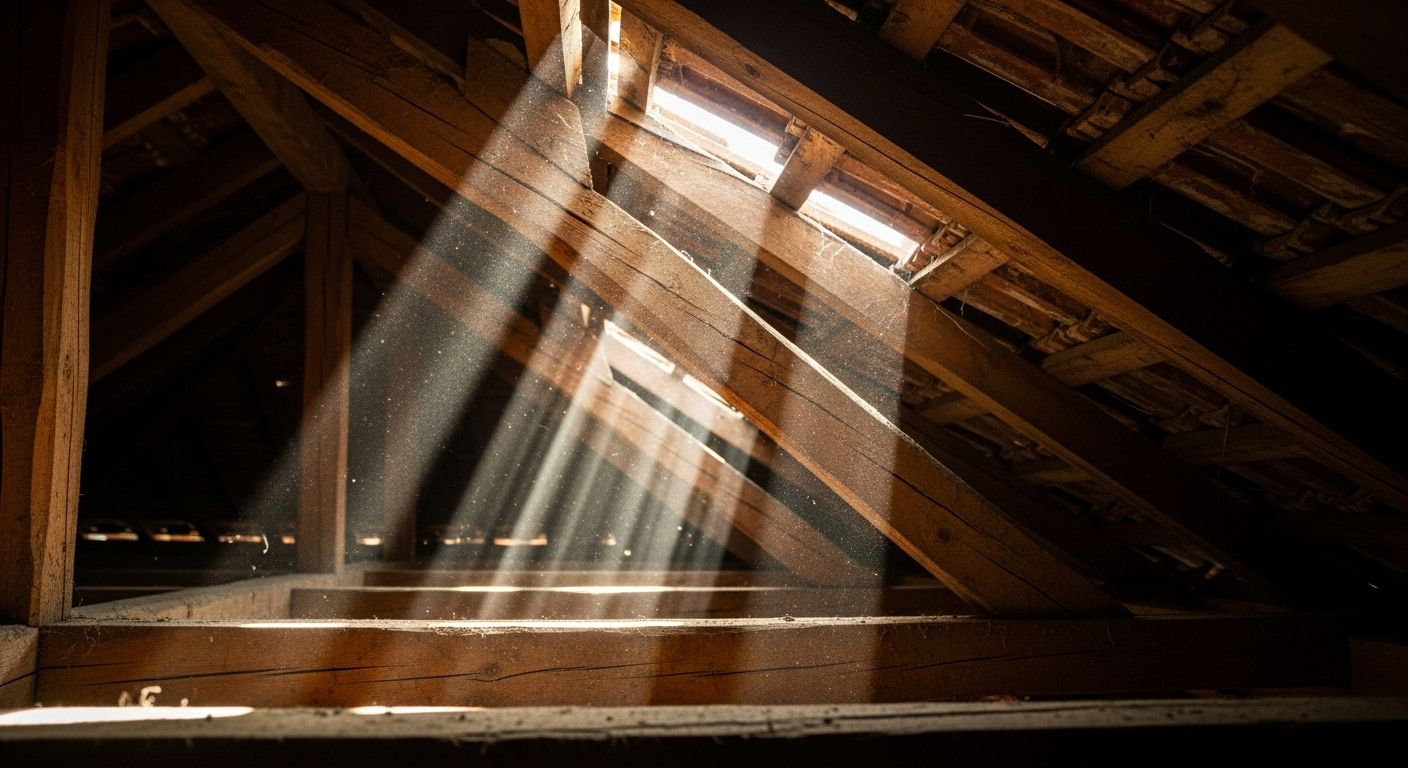
Deciding between a roof overlay and a full replacement isn`t just about cost. It`s about timing, condition, and goals.
If your roof structure is healthy and you need an affordable, fast upgrade, overlaying might be perfect. If there are leaks, rot, or more than one layer already in place, a tear-off is the safer bet.
At American Quality Remodeling, we never take a one-size-fits-all approach. We`ll evaluate your roof, explain both options clearly, and recommend what will truly protect your home for the long term.
A roof isn`t just a layer of shingles – it`s your home`s first defense against New Jersey`s unpredictable weather. Whether you choose a complete replacement or a carefully installed overlay, make sure it`s done by experts who care about both craftsmanship and your peace of mind.
Ready to learn what your roof really needs? Schedule a free inspection with American Quality Remodeling, and let`s build your best roof together.
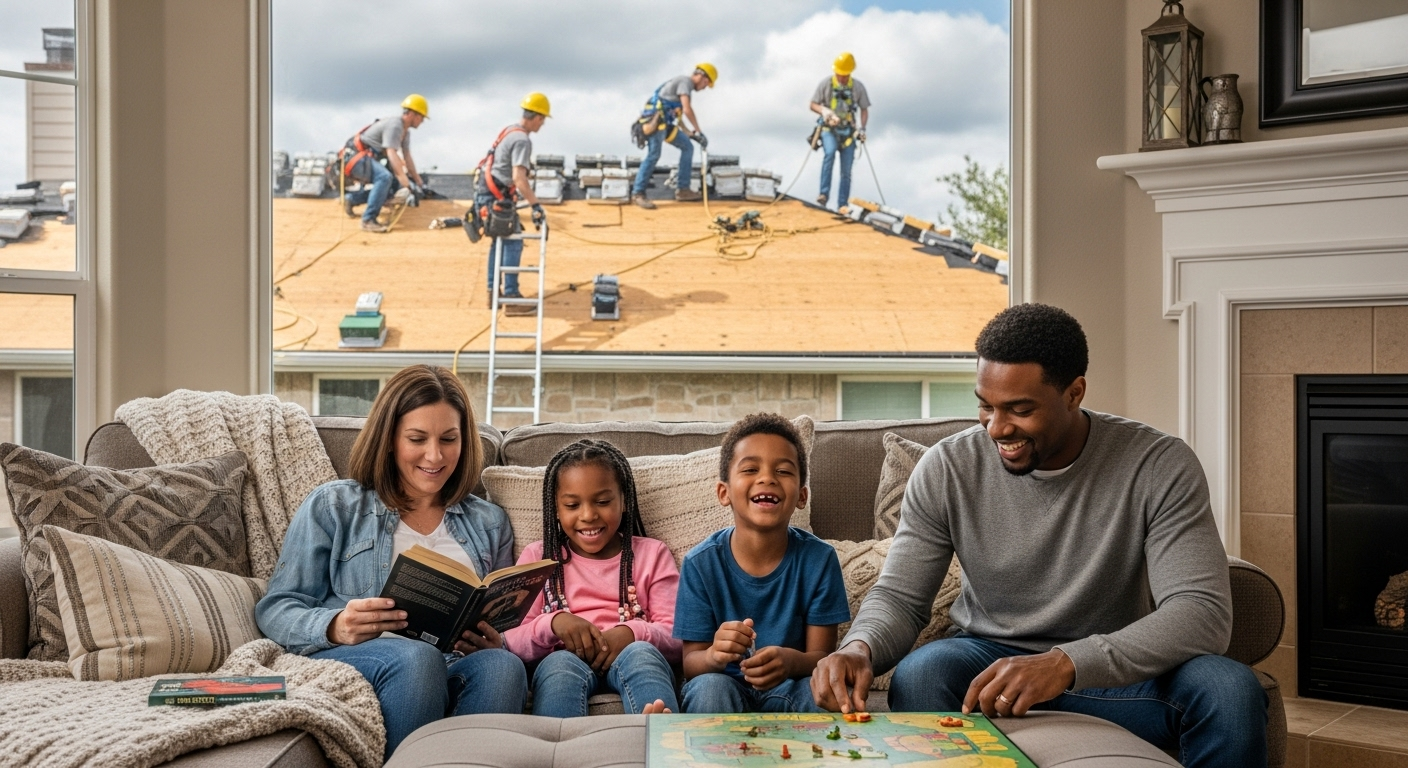
 10 min read Oct 27, 2025
10 min read Oct 27, 2025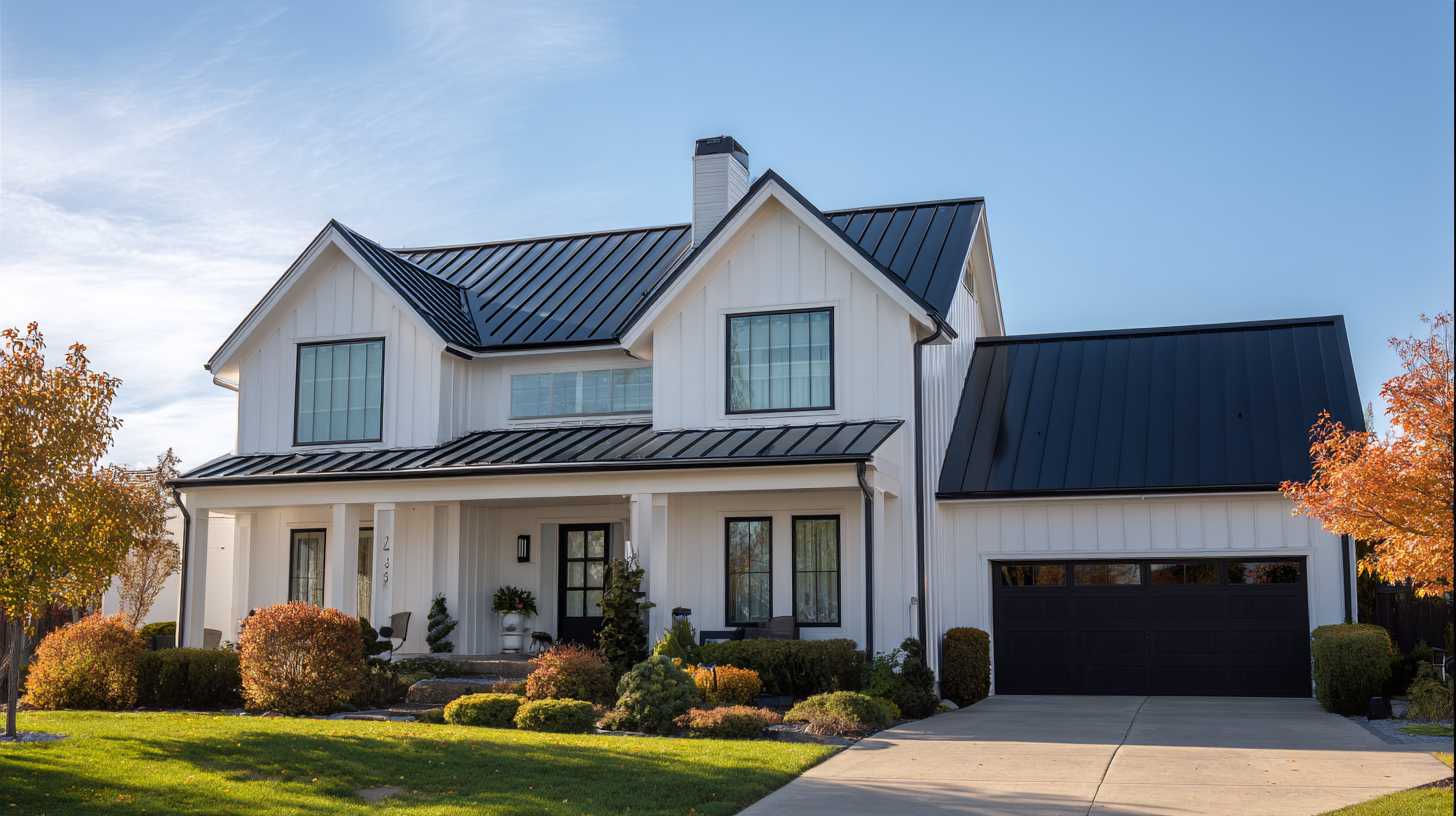 10 min read Oct 20, 2025
10 min read Oct 20, 2025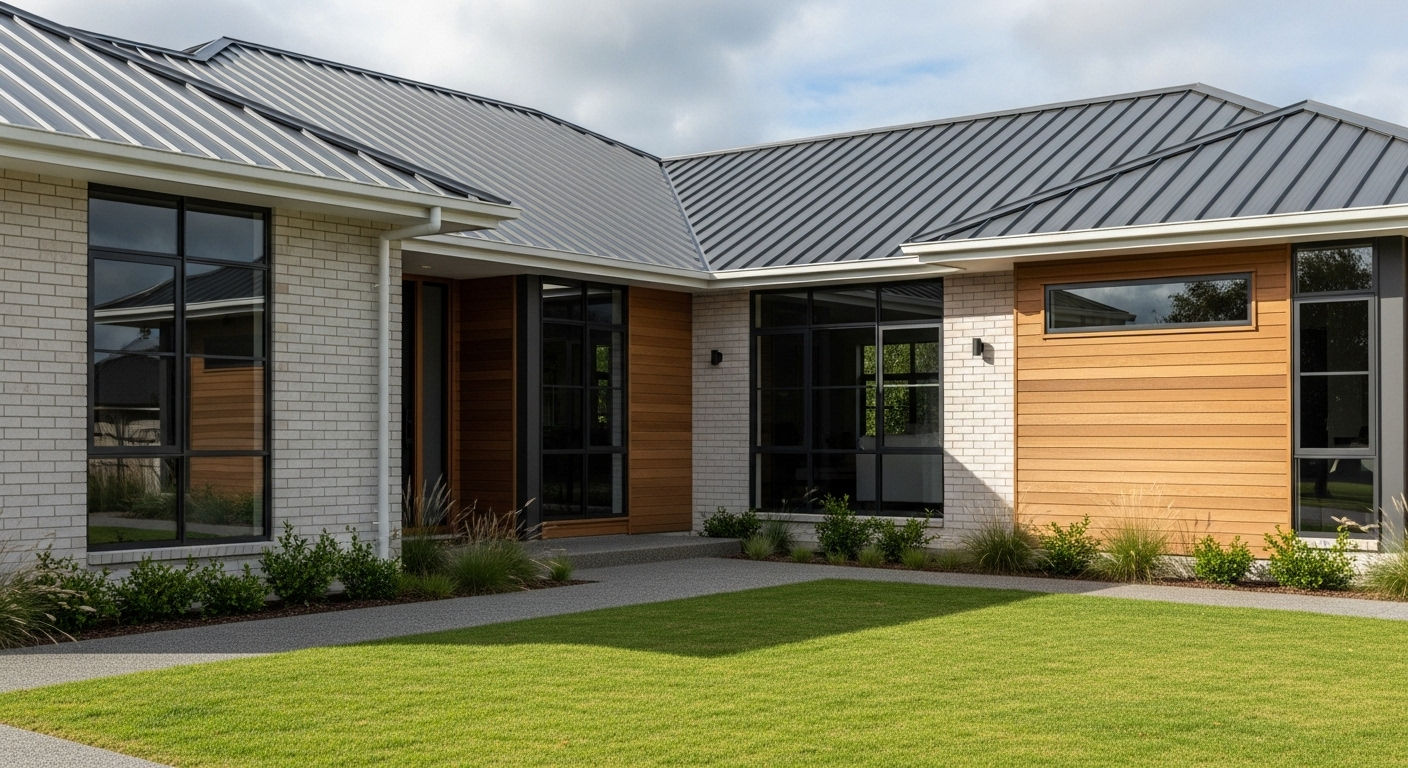 10 min read Oct 17, 2025
10 min read Oct 17, 2025






